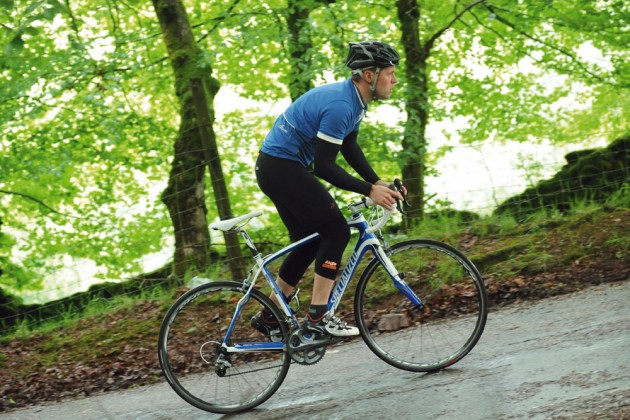When cycling to the route, it is possible to find flat and dirt roads and sometimes to take a climb that may be exciting for many riders, while challenging for others. However, climbing is the inevitable part of cycling, regardless of the type of riding you do. Climbs are also where races are won or lost, so if you’re competing against other riders, being a strong hill climber is important. Winning climbs on the path is a lot of fun, as you’ll see when you get there. It boosts your morale and makes you stable, so you can ride to any route. If you are a nervous rider when approaching a climb, you can dramatically improve your climbing by doing the proper training and developing your technique. So, take a peek here to know all the great tips and learn how to become a hill-climbing star.
- Start A Deep-focused Training
Climbing a mountain generally seems challenging, and cyclists often struggle due to an overestimation of the effort needed and a depletion of strength stores. Preparation is therefore considered half of the struggle, and extensive training is needed before attempting such legendary climbs. Grow up on hill climbs and hill reps into your training routine. If you can’t go outdoors, employ your indoor trainer to create similar environments. The more hills you climb, the higher you can get intensity. It will strengthen your legs and assist you to climb for longer periods of time at a consistent speed.
- Choose a Steady Pace
By pedalling at the same cadence during the climbing, try to maintain a consistent pace. For a climb, a cadence of 80-90 revolutions per minute is considered normal and can be maintained by a fresher rider. If your pedal stroke slows as you climb higher gradients, change gears and pedal at a faster cadence to maintain a steady and effective effort without exhausting your legs.
- Use Sit or Stand Technique
Staying in the saddle is more suitable and can be considered as one of the better climbing techniques. Studies suggest that sitting conserves energy and allows you to pull yourself for longer periods of time. It’s the most aerobically effective way to cycle and trap any climb. As the gradient becomes steeper and harder, it might be tempting to get out of the saddle in order to push up the climb, but you may find the energy and glycogen reserves deplete faster. Standing is better achieved while gradients are greater than 10%, according to studies. Standing on the pedals will assist you to produce up to 30% more strength and employ other leg muscle groups, but only for a short time. Evade rocking on the bike because it wastes energy.
- Be Properly Fuelled
You can burn a lot of calories with your hard ride while climbing. Even if the ride is just an hour long, you need to make sure that you are well-fueled so that you have the stamina as well as the confidence to climb the hill instantly.
It’s better to avoid hydrating on solid food, like an energy bar while climbing, then you might not see the gain until you reach the summit. Prepare ahead of time by eating 15 to 20 minutes before beginning your climb. When you’re climbing, refuel with an energy gel that is easy to manage and consume. Consider treating yourself to an energy bar at the summit as a reward for making it to the top.
- Maintain Your Power Position
Taking deep breaths is vital to quiet your mind and to supply fresh oxygenated blood into your legs. Practice that by holding your back upright and chest open, to provide full ventilation into your lungs. Your elbows should be outside of your hips while you relax your muscles. When it’s time to stand, shift to a higher gear and stand at the end of the pedal stroke to avoid losing traction. However, instead of looping over, imagine yourself softly running uphill on the pedals, letting the bike sway smoothly from side to side but not overly.
- Ensure Your Bike’s Top Condition
It’s tempting to just get on your bike and start climbing, but make sure your bike is up to the task and that you’ve prepared your system for such a trip. Check the drivetrain and gear shifting is in good working shape, and that the tires are at the proper pressures for the climb. Depending on the type of climb you’re approaching, the gearing on your bike can be crucial. On your road bike, changing the chainset or cassette size will make a huge difference. A narrower chainset and a wider ratio cassette would let you rotate a gear a little faster, making the climb more convenient. To conclude, cycling is fun but without climbing a hill it is just swimming in the pool, not in the sea. Don’t be frightened, rather encourage yourself to get the improvement on climbing faster. Then, you can find the real taste of cycling and climbing. Try to work on the tips and stick to the training schedule to get immediate results on your struggling. Have a Great Climb!

